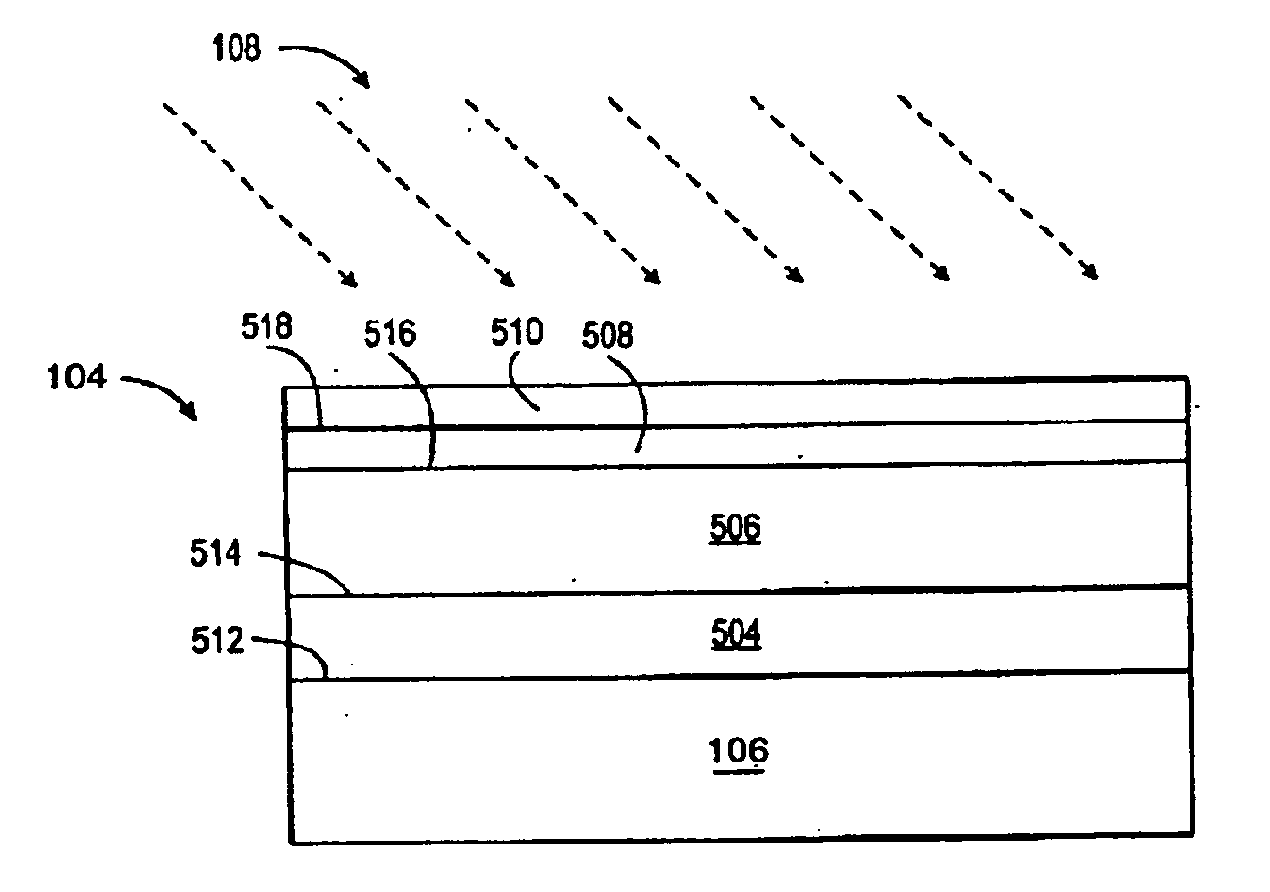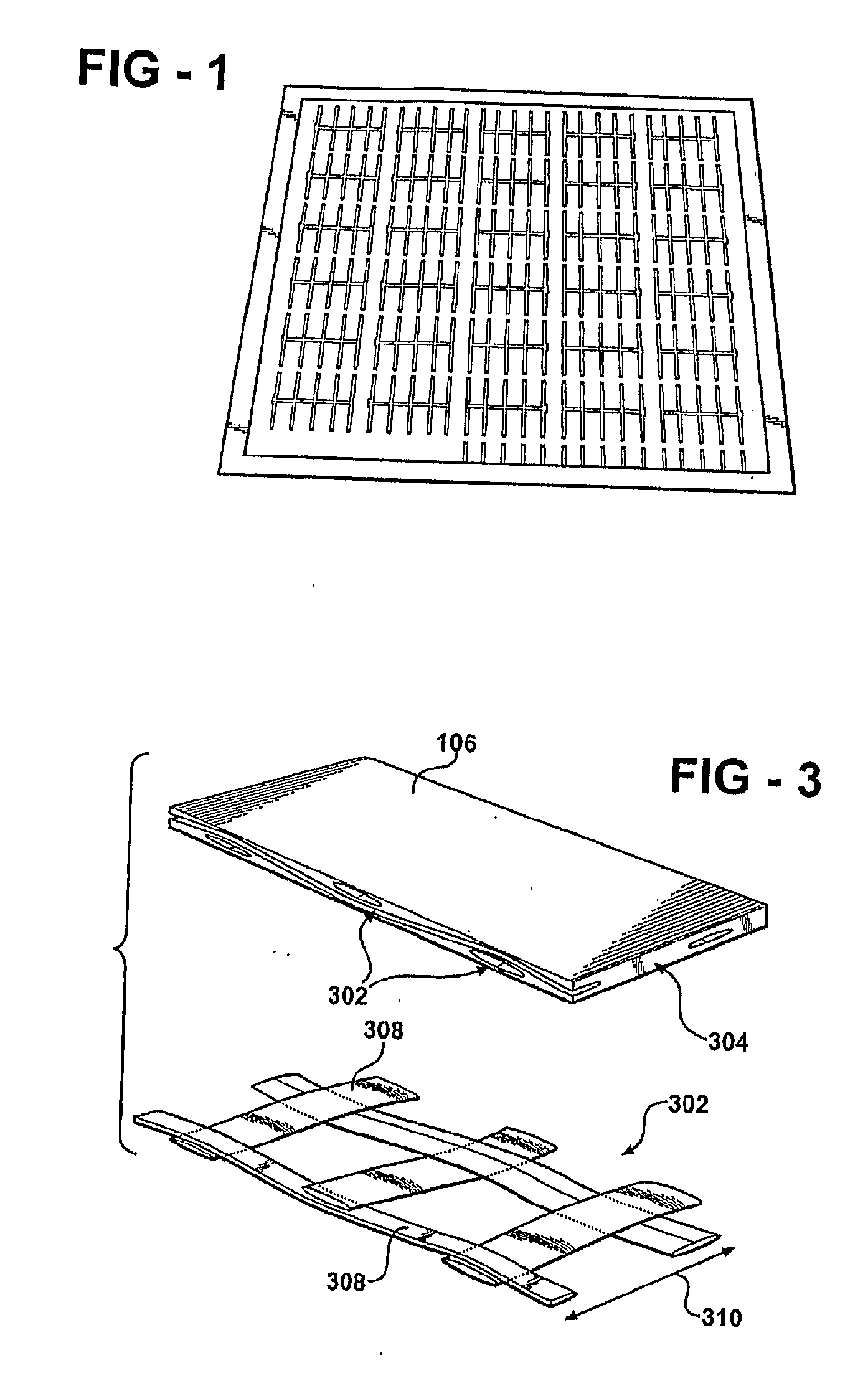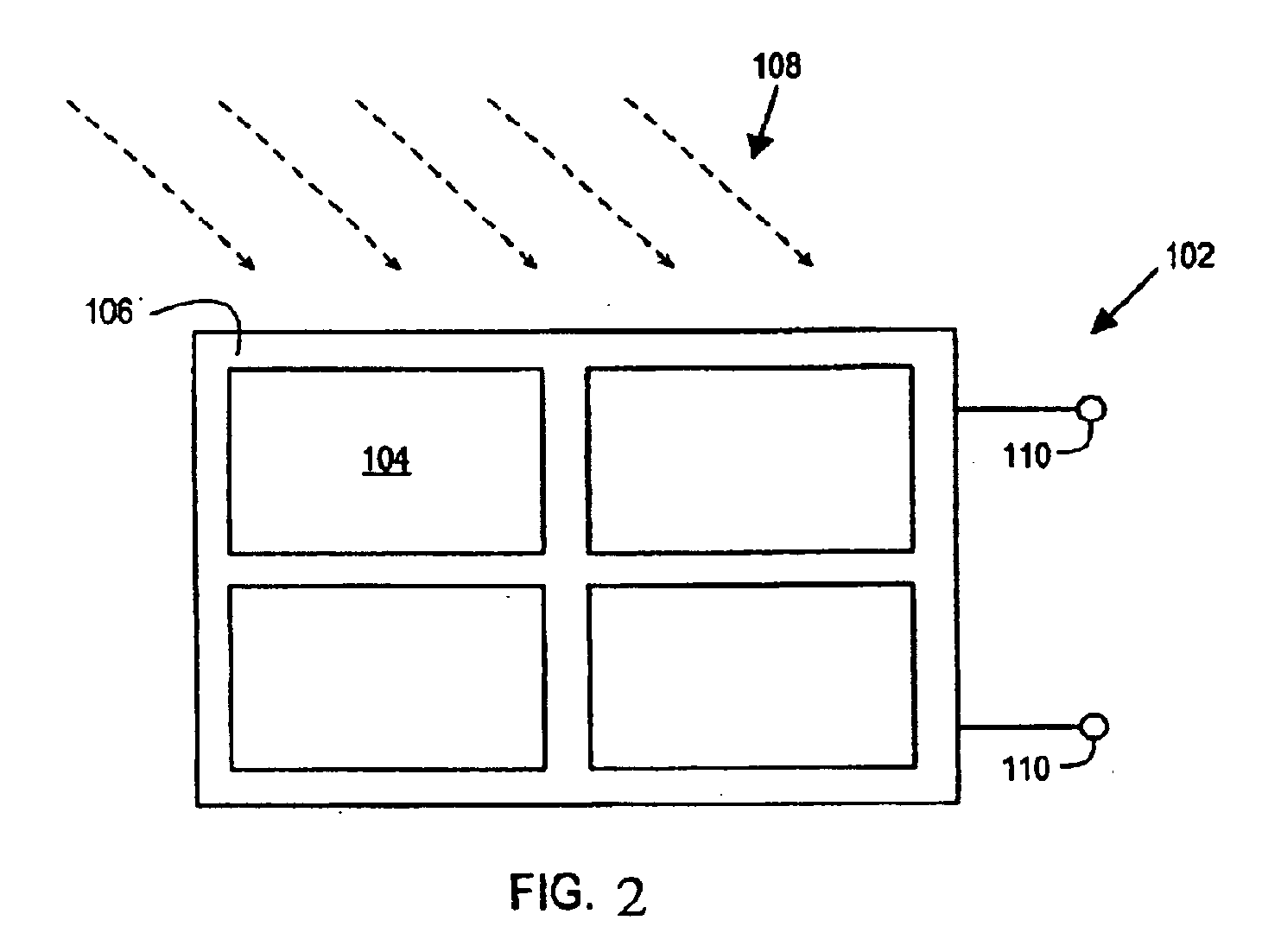Copper Indium Diselenide-Based Photovoltaic Device And Method Of Preparing the Same
a technology of copper indium diselenide and photovoltaic device, which is applied in the field of photovoltaic device, can solve the problems of limited application limited use of cis-based photovoltaic device substrate, and typical rigidity of glass devices, and achieve the effect of maximum device efficiency
- Summary
- Abstract
- Description
- Claims
- Application Information
AI Technical Summary
Benefits of technology
Problems solved by technology
Method used
Image
Examples
example 1
Preparation of Fiber Reinforced Substrates from MP101 Crystal Coat Resin
[0210]A four-inch wide saturation trough was used. Style 106 glass fabric, obtained from BGF Industries and heat cleaned in air, was cut into strips 15″×3.5″ in size. Approximately 7 ml of the MP101 resin, available from SDC Technologies, Inc., was placed in the saturation tough and the glass fabric was drawn through the resin solution to form an impregnated fiber reinforcement. The impregnated fiber reinforcement was hung vertically in a fumed hood to dry and then transferred to an air-circulating oven to cure. The impregnated fiber reinforcement was partially cured at 50° C. for 10 min. and then impregnated again with the same resin. After drying, the impregnated fiber reinforcement was cured by the following procedure: 1° C. / min. to 75° C., 75° C. / 1 h., 1° C. / min. to 100° C., 100° C. / 1 h., 1° C. / min. to 125° C., and 125° C. / 1 h to form the fiber reinforced substrate. The fiber reinforced substrate was kept in...
example 2
Preparation and Properties of Fiber Reinforced Substrates from the MP101 Crystal Coat Resin and 0.2 wt % Treated Pyrograf III
[0211]0.031 grams of oxidized Pyrograf III was mixed into 50 grams of MP101 Crystal Coat resin in a glass vial and placed in a Bransonic ultrasonic cleaning bath and dispersed for 30 minutes. The mixture was then centrifuged if there was un-dispersed powder and the top dispersion was taken for film preparation.
[0212]The Style 106 glass fabric was heat, cleaned, and cut into a shape that would fit into the saturation pan. The mixture of the Pyrograf III and MP101 Crystal Coat resin was placed in the saturation pan, and the fabric was passed through the mixture in the saturation pan to form an impregnated fiber reinforcement. The impregnated fiber reinforcement was hung vertically in a fumed hood to dry and then transferred to an air-circulating oven to cure by the following procedure: 1° C. / min. to 75° C., 75° C. / 1 h., 1° C. / min. to 100° C., 100° C. / 1 h., 1° C....
example 3
Fabrication and Testing of CIGS (Copper Indium Gallium Diselenide)-Based Photovoltaic Devices on Substrates Prepared from Example 1
[0213]An approximately 0.5 micrometer thick layer of molybdenum was sputtered onto the fiber reinforced substrate prepared in Example 1. Copper, indium, and gallium were co-evaporated onto the layer of molybdenum in a selenium atmosphere at a deposition substrate temperature of about 575° C. for 20 minutes to form a CIS-based solar absorber layer having a thickness of about two micrometer thick. A 50 nm layer of CdS was then deposited onto the CIGS layer through a wet CBD bath process to form a window layer. A ZnO electrically insulating layer and an ITO top contact layer were sputtered onto the window layer and then nickel-silver grids were evaporated onto the top contact layer. The cell performance was tested under AM1.5 illumination condition and an efficiency of 1 to 2% was measured.
PUM
| Property | Measurement | Unit |
|---|---|---|
| temperature | aaaaa | aaaaa |
| temperature | aaaaa | aaaaa |
| temperatures | aaaaa | aaaaa |
Abstract
Description
Claims
Application Information
 Login to View More
Login to View More - R&D
- Intellectual Property
- Life Sciences
- Materials
- Tech Scout
- Unparalleled Data Quality
- Higher Quality Content
- 60% Fewer Hallucinations
Browse by: Latest US Patents, China's latest patents, Technical Efficacy Thesaurus, Application Domain, Technology Topic, Popular Technical Reports.
© 2025 PatSnap. All rights reserved.Legal|Privacy policy|Modern Slavery Act Transparency Statement|Sitemap|About US| Contact US: help@patsnap.com



